
Back to the Index page
This was a trip to find the scarce Tufted loosestrife which is known to grow at Gormire (the only natural lake in this part of Yorkshire, formed at the end of the ice age when a huge landslip created a hollow at the foot of the Whitestone Cliff (Sutton Bank) scarp. We began in the Yorkshire Wildlife Trust’s Garbutt Wood nature reserve and then walked around the lake clockwise.

This plant is related to the yellow pimpernel that grows wild in local woods and the common garden yellow loosestrife. It is scarce everywhere and I believe Gormire is its only known site in NE Yorkshire. It is a said to be a shy flowerer, but although it is true that at least half the plants did not have any flowers we found plenty that did. The flowers are much smaller than yelllow loosestrife’s and occur in globular clusters in the leaf axils. It grows at the water’s edge, often with marsh cinquefoil. In many cases we notice it was in a relatively narrow band between bogbean (Menyanthes trifolium) on the lake side and the water forget-me-not on the land side.
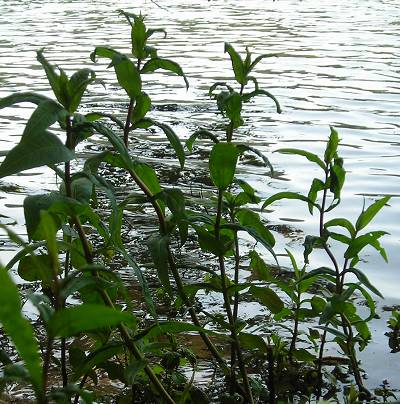
Tufted loosestrife plants at the water’s edge
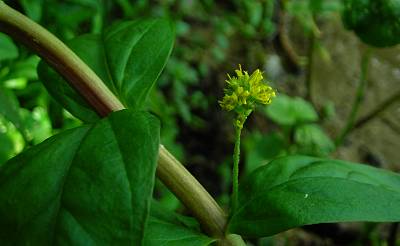 Flowers showing how they grow in a cluster from the leaf axils (usually two at each node, one on each side of the stem). Each plant only bears one or two pairs of flower-clusters, just above half way up the stem. The detail on the right shows the individual flowers with exserted stamens and the central style. Most of these flowers have 6 petals and are only about 4mm across. The central “boss” of the flower was like a green globe with lines of minute red dots, but sadly this does not show in the photo. According to the books the leaves and flowers should have black glands but these specimens do not – I have no idea if this is a regional variation or just that the Gormire plants are aberrant! Similarly they “should” have 5 petals but clearly our plants don’t read the books. |
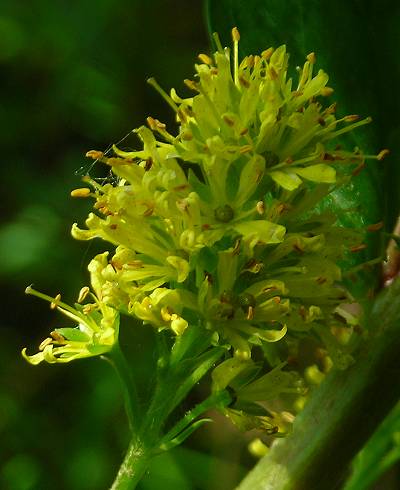 |
Growing with the loosestrife was the rather odd-looking marsh cinquefoil. At first sight it is hard to believe this plant is a close relative of potentillas such as tormentil, silverweed or creeping cinquefoil, although the leaves are reminiscent of the latter. A rather untidy plant that always seems to produce rather a lot of leaves for not much flower. The flowers themselves are a curious maroon, and on close examination the petals are seen to be minute and strap-like; what at first sight appear to be petals are in fact the sepals – here again the books suggest there should be five (as you might expect from the name cinquefoil) but many of our plants had six. The plant on the left was within feet of the loosestrife shown above. You can see one of the strap-like petals on the flower at the bottom right of the detailed picture.
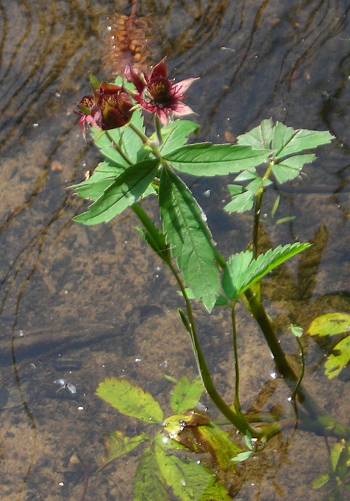 |
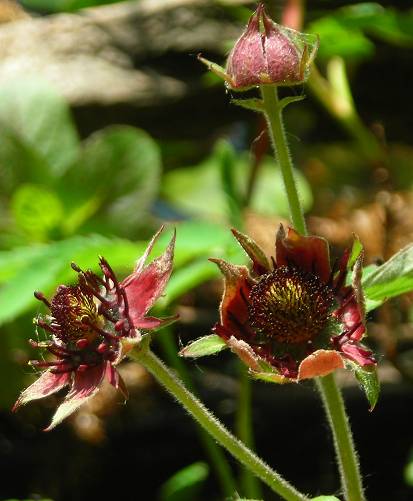 |
Growing close to but on the path side of the loosestrife was one of the smaller water forget-me-nots. On closer examination we decided it was M. secunda, sometimes known as creeping forget-me-not. How did we decide? It had spreading hairs on the lower part of the stem which the other small-flowered water myosotis M. laxa does not.
Edit: I am now less convinced by this id, having seen undoubted M. secunda in Rosedale (a better, more acid habitat for it). I am inclined to think that this Gormire plant is indeed M. laxa – which just goes to show what a triky group the forgetmenots are! GS 2018.
 The normal blue form of M. secunda. Although the fruit is only just forming you can see the characteristic long stalk developing. An on the right another plant that can’t read – who said forget-me-nots were blue?! There were a few of these all-pink ones. |
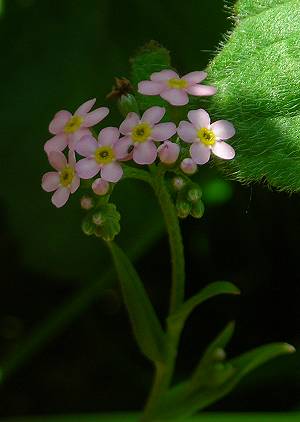
|
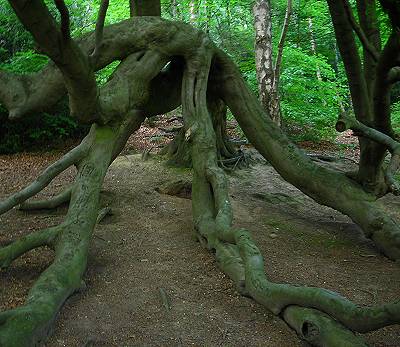 On the way around the lake I spotted this extraordinary contorted beech which appeared to have collapsed, possibly in a storm, but wherever the branches had touched the ground they had rooted, then turned up and carried on growing (there were branches with healthy leaves behind me).
On the way around the lake I spotted this extraordinary contorted beech which appeared to have collapsed, possibly in a storm, but wherever the branches had touched the ground they had rooted, then turned up and carried on growing (there were branches with healthy leaves behind me).
While we were having lunch this ladybird (14-spot I think) landed on my shoe.

In the wood there was plenty of yellow pimpernel Lysimachia nemorum, related of course to the tufted loosestrife. The flowers on this are much more like those of the garden loosestrife. Down by the water’s edge another yellow flower was coming into bloom – lesser spearwort which is actually a buttercup (Ranunculus flammula).
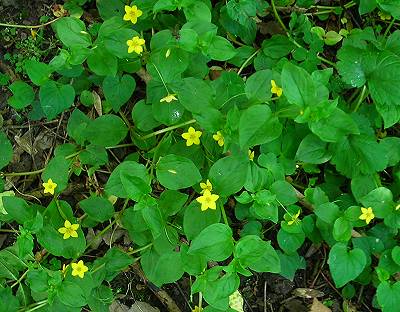
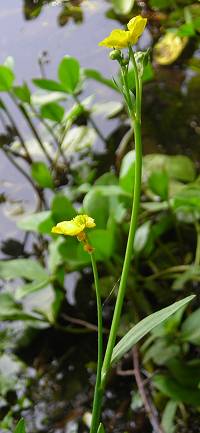
And this rather splendid shiny green fly was sunbathing on an ash leaf...
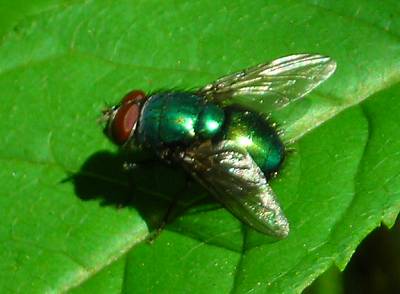
| Gill Smith | Back to the Index page |
Text and photos © Gill Smith 2007, 2018